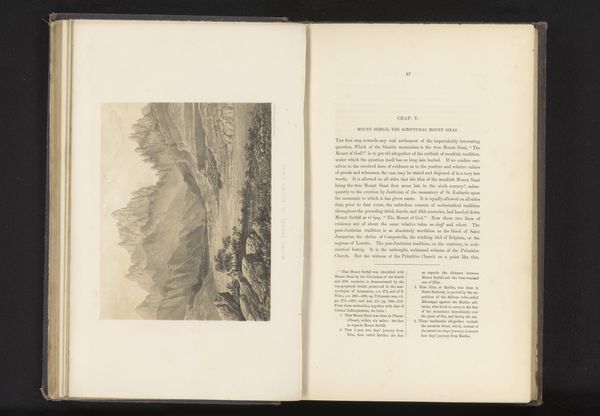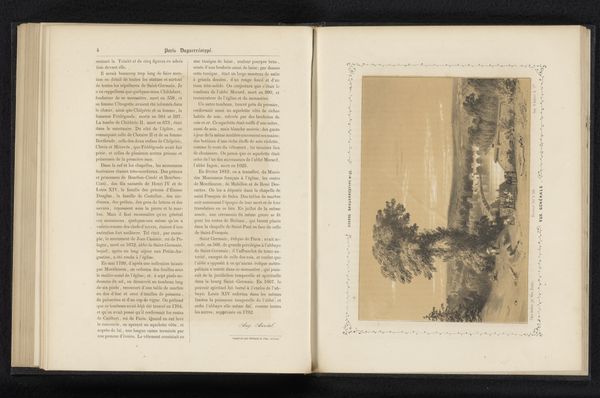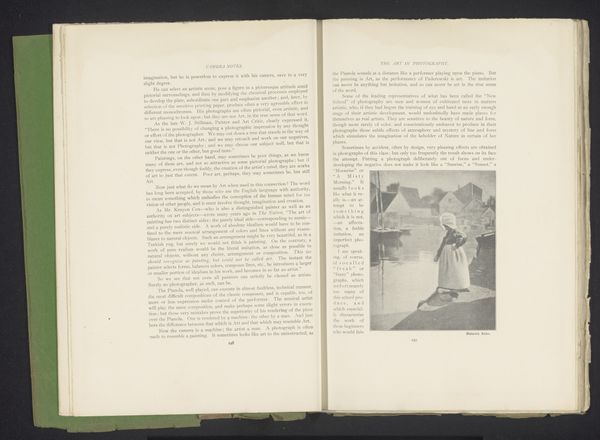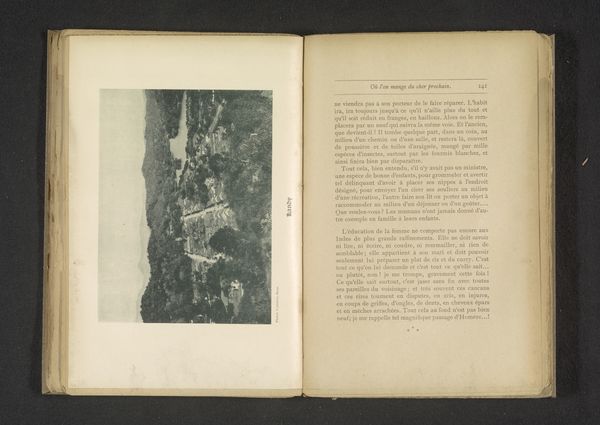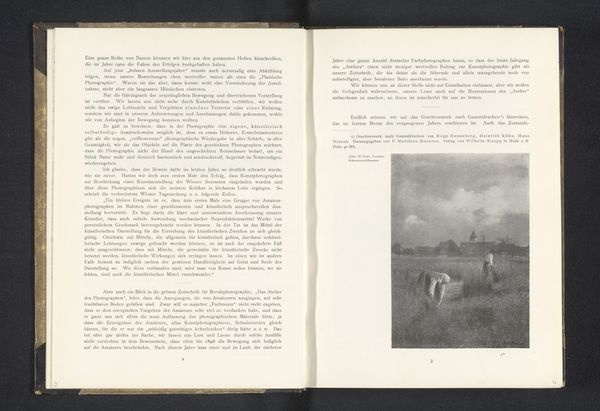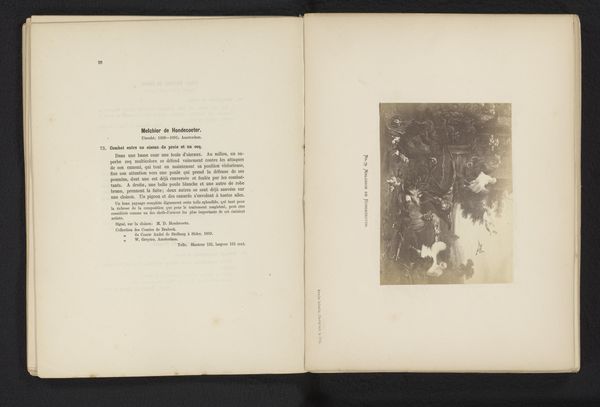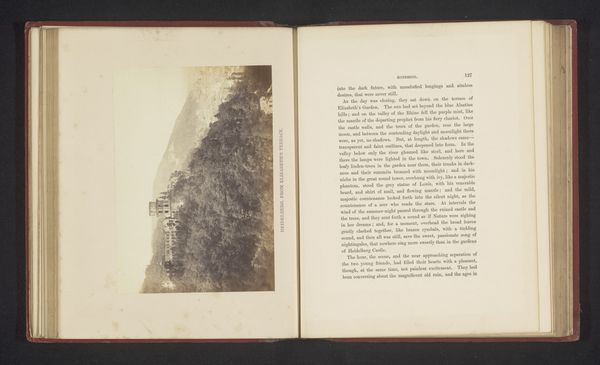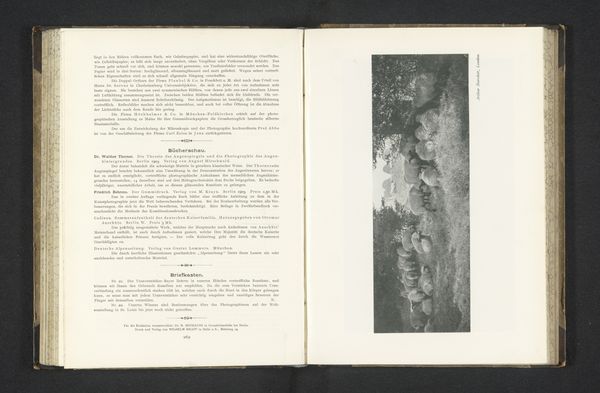
print, photography
#
pictorialism
# print
#
landscape
#
photography
Dimensions: height 129 mm, width 239 mm
Copyright: Rijks Museum: Open Domain
Editor: This is "Vrouw in de tuin van Villa Torlonia in Rome" or "Woman in the Garden of Villa Torlonia in Rome," created before 1903 by Hugo Henneberg. It's a photograph, a print, and has such a peaceful, almost hazy feel. What do you see in this piece? Curator: What strikes me is the framing, both literally as an image in a book, and the way the composition itself creates a sense of enclosure and exclusion. Think about the context: early photography grappling with its identity as art. Pictorialism, like we see here, tried to elevate photography by mimicking painting, softening the focus, manipulating the print. Editor: So it’s about making photography more “artistic”? Curator: Precisely. But consider who could access this kind of "artistic" photography then. These gardens are staged – this isn't some accidental snapshot. There's a performance of leisure and bourgeois identity happening. What do you make of the woman herself? Editor: She’s small, almost anonymous in the landscape. Her back is to us. Curator: Exactly. Is she truly present in this garden, or is she part of the aesthetic display, another object within the composition, a demonstration of status? These photographs served to promote specific values and ideals about art and life to a particular segment of society. How does thinking about that influence your initial peaceful reaction? Editor: It makes me reconsider my interpretation. What initially felt tranquil now feels like a constructed scene with a silent political commentary about who gets to occupy and be represented in these spaces. Curator: And how the medium itself contributes to the message. The very act of "artifying" the photo through pictorialism subtly reinforces a specific cultural hierarchy. Editor: I never considered the political and social context of pictorialism before. It adds a whole new dimension to appreciating this seemingly tranquil scene. Curator: Indeed. Seeing beyond the surface aesthetic is crucial.
Comments
No comments
Be the first to comment and join the conversation on the ultimate creative platform.
